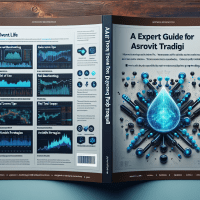Solvent.Life vs Vantir: AI Strategy vs AI Feedback Models in Prop Trading
Prop trading remains one of the most dynamic sectors in financial markets. In an industry where precision and advanced analytics determine success, comparing AI strategy models such as those from Solvent.Life and Vantir provides traders, risk managers, and quants with crucial insights for optimizing their trading edge. This article will walk you through detailed comparisons, backtesting best practices, and actionable strategies to integrate these platforms into your prop trading framework.
Figure 1: Example interface of a backtesting report showing key performance metrics such as drawdown and Sharpe ratios.
Understanding the AI Models in Prop Trading
Prop trading firms increasingly rely on AI-driven strategy and feedback models to enhance decision making. When comparing Solvent.Life and Vantir, it’s vital to recognize the distinct approach each platform employs. Solvent.Life emphasizes automated strategy generation with predictive analytics whereas Vantir focuses on real-time AI feedback to adapt trading models based on market conditions.
Key Differences in AI Strategy vs. AI Feedback
- Solvent.Life: Centers on generating AI-driven trading strategies. Advanced algorithms forecast market trends with automated backtesting and scenario analysis to refine parameters. It’s particularly useful for quantitative teams needing robust forecast models.
- Vantir: Provides dynamic AI feedback during live trading sessions. Its models adjust parameters in real time, offering an interactive edge suited for traders who prefer adaptive systems over static pre-testing.
Advanced Backtesting Fundamentals in Prop Trading
Backtesting remains the cornerstone of validating any AI trading model. Prop traders must navigate pitfalls like overfitting, survivorship bias, and look-ahead bias. Here are several core practices:
Mitigating Common Backtesting Pitfalls
- Overfitting: Always reserve out-of-sample data to ensure models don’t just perform well on historical specifics.
- Survivorship Bias: Include data from delisted stocks or instruments to fully understand historical performance.
- Look-Ahead Bias: Ensure that signals or data used for testing are strictly available at the time of the trade.
A strong strategy is using walk-forward optimization compared to traditional backtesting. Walk-forward testing continuously adapts the parameters enabling a simulation of live market responses. This strategy is crucial for AI models that continuously tweak based on incoming feedback, as is the case with Vantir.
Integrating Backtesting with Live Trading
The process does not end with backtesting. For prop trading, linking backtesting results with forward testing (or paper trading) is imperative before live deployment. Key metrics such as Sharpe ratio, maximum drawdown, and profit factor should be continuously monitored during the transition from simulation to live trades.
Comparative Analysis of Backtesting Tools for Prop Trading
Automated backtesting tools are central to modern prop trading. Here, we compare several widely recognized platforms:
| Tool | Backtesting Features | Data Availability | Integration Capabilities | Pricing & Use Case |
|---|---|---|---|---|
| TradingView | Vectorized backtesting with script optimization; handles commissions and slippage. | Deep historical data across various asset classes; real-time feeds available. | API access for broker integration; compatible with multiple analytics platforms. | Free tier available with paid upgrades; ideal for both prop teams and retail traders. |
| NinjaTrader | Event-driven backtesting, stress testing, and scenario analysis features. | Extensive tick and bar data; supports equities, futures, and forex. | Robust API support; seamless integration with broker platforms. | Subscription-based pricing with trial options; best for institutional and prop firm setups. |
| MetaTrader 5 | Automated parameter optimization and sophisticated reporting tools. | Comprehensive historical data; supports real-time integration with data providers. | API and broker integration; supports expert advisors and third-party plugins. | Widely accessible with free demo accounts; strong for retail and prop environments. |
The above tools illustrate how prop trading firms can benefit from varied backtesting capacities tailored to both strategy development and live adaptive feedback mechanisms.
Case Studies: Real-World Application in Prop Trading
Let’s consider two anonymized case studies showcasing how these platforms support prop trading firms:
Case Study 1: Enhancing AI Strategy with Solvent.Life
A mid-sized proprietary trading firm sought to optimize its algorithmic strategies using Solvent.Life. Facing challenges like rapidly changing market conditions and overfitting, the firm integrated Solvent.Life’s automated backtesting modules with Walk-Forward Analysis. The outcome was quantifiable improvement – a Sharpe ratio increase from 0.8 to 1.5, accompanied by a 15% reduction in maximum drawdown. The firm’s quantitative team used automated parameter optimization and scenario analysis to fine-tune strategies based on historical and out-of-sample data.
Case Study 2: Adaptive Feedback with Vantir
An established prop trading desk integrated Vantir into their live trading framework to supplement traditional backtesting. The platform’s real-time AI feedback allowed traders to dynamically adjust strategies in response to market shifts. Challenges like data latency and ensuring integrative compliance with MiFID II regulations were overcome by Vantir’s seamless API integration and robust real-time data feeds. The feedback provided led to immediate enhancements in trade execution decisions, offering a 20% reduction in response time to market anomalies and improved compliance adherence.
Implementing Advanced Backtesting Methodologies
For prop trading professionals looking to harness these platforms effectively, here are some actionable steps:
Step-by-Step Backtesting and Live Trading Integration
- Data Quality Assessment: Ensure your historical data is comprehensive (tick vs. bar data) and adjusted for events like dividends or splits.
- Automated Parameter Optimization: Utilize tools like TradingView and Backtrader for optimizing your model parameters automatically.
- Walk-Forward Analysis: Implement walk-forward testing to simulate live market conditions and adjust strategies dynamically.
- Feedback Loop Integration: For platforms like Vantir, set up real-time monitoring dashboards that feed back into strategy adjustments.
- Risk Management: Incorporate a detailed risk management checklist. For example, consider a risk management checklist that includes daily stop-loss limits, maximum drawdown thresholds, and trade size guidelines.
Figure 2: Interactive dashboard displaying real-time trade performance metrics and backtesting outcomes, enhancing team collaboration.
Practical Code Example: Automated Strategy Backtesting with Python & Backtrader
import backtrader as bt
class TestStrategy(bt.Strategy):
def __init__(self):
self.sma = bt.indicators.SimpleMovingAverage(self.data.close, period=15)
def next(self):
if self.data.close[0] > self.sma[0]:
self.buy()
elif self.data.close[0] < self.sma[0]:
self.sell()
cerebro = bt.Cerebro()
data = bt.feeds.YahooFinanceData(dataname='AAPL', fromdate=datetime(2019, 1, 1), todate=datetime(2020, 1, 1))
cerebro.adddata(data)
cerebro.addstrategy(TestStrategy)
results = cerebro.run()
Expert Guidance and Industry Insights
Pro Tip: When implementing AI-driven backtesting in prop trading, always verify data integrity and continuously integrate forward testing to mitigate any risk of over-optimization. Maintaining a cyclical feedback loop between automated simulations and live experiments ensures that trading models are robust and adaptive.
Internal Resources for Prop Trading Enthusiasts
For readers seeking further guidance, consider exploring our in-depth guides on Effective Risk Management in Prop Trading and Prop Trading Strategy Roadmap for advanced techniques and tools.
Regulatory Compliance and Prop Trading Framework
Prop trading firms must navigate various regulatory frameworks such as MiFID II, ESMA regulations, and NFA rules. Both Solvent.Life and Vantir emphasize compliance, featuring integrated reporting and validation tools that help firms align with these regulations while optimizing strategies. Staying abreast of these guidelines not only ensures legal adherence but also builds trust with stakeholders.
Conclusion: Next Steps in Elevating Your Prop Trading Strategy
As prop trading continues to evolve, leveraging AI strategy and feedback models is imperative for staying ahead. Whether integrating Solvent.Life’s robust strategy generation or Vantir’s adaptive feedback mechanisms, applying comprehensive backtesting and live trial techniques will enhance your trading performance.
For a deeper dive into each aspect, download our complete Risk Management Checklist and explore our detailed Trading Journal Template designed exclusively for prop trading professionals. Implement these actionable strategies and enhance your trading systems today.
As of October 2023, these insights reflect the most current trends and tested practices in prop trading. Stay updated by subscribing to our newsletter and joining our upcoming webinar to learn more about prop trading innovations.







